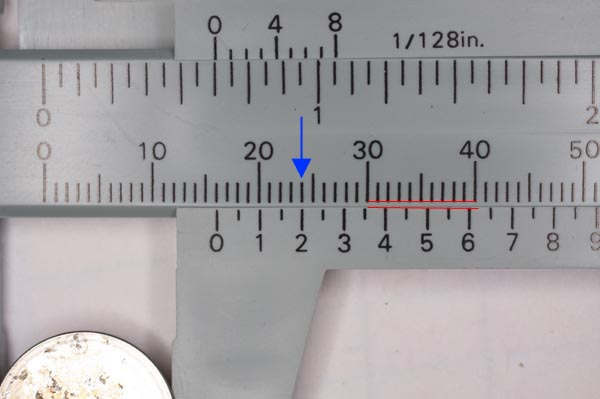Plastic calipers: close but no cigar
There are certain situations in life where a set of digital calipers or dial calipers just won't cut it. With the advent of cheap digital calipers, it has become more reasonable to take these instruments into conditions where they may get splashed, knowing that they can be easily replaced should you accidentally drop them in a tidepool. Still, in some cases it's nice to be able to use a set of vernier calipers sometimes,especially when you know you'll be getting splashed or submerging the calipers.
It used to be the case that you could find relatively affordable, high quality plastic vernier calipers. Plastic is nice since it won't rust, and you're less likely to shove the tips of the jaws through your arm accidentally, like you might with metal calipers. Unfortunately, you're hard-pressed to find a vendor for quality plastic vernier calipers these days. You can get stainless steel verniers, for a price, and they're still a danger to you when you're slipping and sliding around in the field.
As with so many other products, the Chinese have stepped up to the plate and started making plastic vernier calipers, such as those pictured above. These calipers are available from Harbor Freight, in this case they are part number 7914, and they cost about $2. They're dirt cheap, but are they any good? I ordered two sets to find out.
First off, the build quality is as you would expect: abysmal. They're light and flimsy, and there is a ton of play between the main body and the sliding jaw. That's acceptable though, as long as they're somewhat accurate. Unfortunately, they're even a bit lacking in that department.
I started by measuring an iButton I had laying on my desk, using a Mitutoyo digital micrometer, with a resolution of 0.001 mm. The diameter of the iButton was 16.282 mm. I then measured the iButton with a pair of cheap 6" digital calipers from Harbor Freight (part number 47257 ontheir website). These calipers, which retail for about $20, measured the diameter of the iButton at 16.28 mm, as close as you can get given their resolution of 0.01 mm.
The digital calipers do a perfectly acceptable job of measuring the iButton accurately and repeatably. Next I dug out my trusty set of plastic vernier calipers (that you can no longer buy). These vernier calipers only have a resolution of +/- 0.05 mm, which is the typical standard for vernier calipers. They returned a diameter of 16.25 mm, as accurate as you can expect to be with these calipers (a reading of 16.25 or 16.30 would be acceptable).
Lastly, the new "Cen-Tech" plastic vernier calipers come out. They have a resolution of 0.05 mm just like the vernier calipers above. They produced a measurement of 16.20 mm, and this measurement wasn't particularly repeatable. Sometimes it was as low as 16.15 mm.
In use, these calipers have two glaring problems. 1. They're not particularly accurate, or repeatable. 2. They're a pain to read because of poor design. In the picture below, I've put a blue arrow on the marks that look the most lined up to my eye. It's a bit of a chore to decide this though, because of the large gap between the ends of the vernier markings, which I've illustrated with the red lines.

If you look back at my old set of plastic calipers above, you can see that the marks on the main body and sliding jaw meet up, making it easy to decide which pair of marks is most in line. The Cen-Tech calipers are poorly made in this respect. The additional problem of the sloppy fit between the main caliper body and the sliding jaw exacerbates the reading difficulties.
Ultimately, the points I've raised here only matter if you're trying to be very accurate with your measurements. If you only want to get within 1 mm of the true dimension, these calipers will work fine. Even if you can get away with an accuracy of +/- 0.5 mm, these will be fine. But if you're hoping for accuracy at the 0.1 mm or 0.05 mm scale, these won't cut it.

<< Home